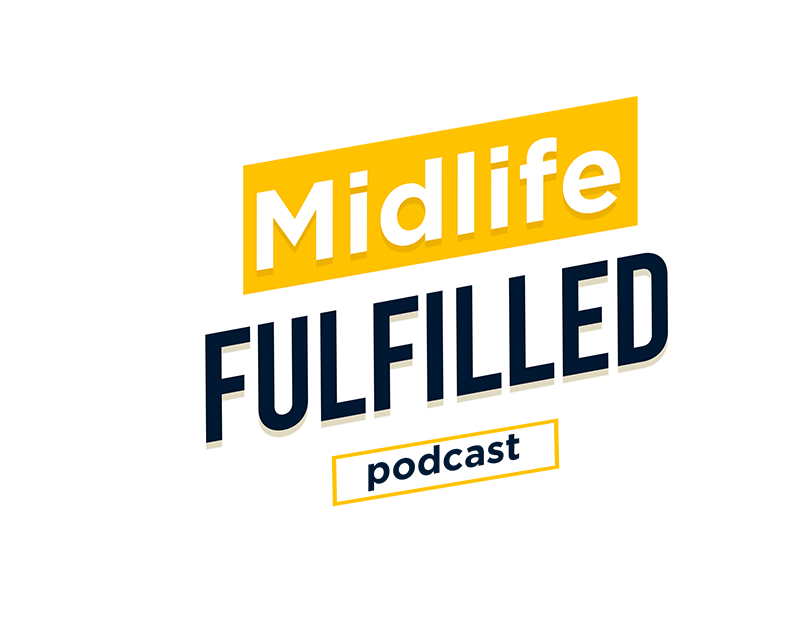I recently came across the concept of projects as a metaphor for career chapters. We commonly speak of our career as consisting of chapters. Some of those chapters are planned, and for many of us they just happen, despite the best laid plans. A great example is how Diane Diaz’ career chapters unfolded after she was downsized from a job, as she explains on episode 35 of the Midlife Fulfilled podcast.
Sometimes the chapters in our career are progressive, meaning that one chapter leads to another, progressing to another more rewarding opportunity within a specific career path. A recent medical student graduate may land her first opportunity in a teaching hospital, progressing through roles, leading to an opportunity to specialize in a discipline such as orthopedics. After some years of specialization, this doctor earns recognition among patients and doctors alike for her orthopedic expertise, leading to a lucrative private practice that sustains her and other orthopedic doctors for many decades, leading to an eventual comfortable retirement.
The hypothetical story above is a dream scenario. This doctor achieves everything she aspired to achieve since she was a teenager aspiring to become a doctor.
Unfortunately, this scenario is the exception, not the norm for most of us. Story after story, people in midlife seasons share their journey as being anything but linear. It’s not uncommon for careers to experience zigging and zagging as Brian Piper explains in episode 7.
But, is this really unfortunate?
What if we viewed our career as a series of projects?
The definition of a project from Dictionary.com is: “something that is contemplated, devised or planned; a large or major undertaking, especially one involving considerable money, personnel or equipment.”
In my corporate career, I’ve worked on many “projects.” A typical project has a beginning and an end.
This is where the metaphor of a project as chapters in your career gets interesting. Thinking of your current “job” – even if you’re self-employed or if you run your own business with employees – as a project can be very productive.
Let’s look at three scenarios.
You’re an employee.
When you work for a company, you start in a specific role. That role may be a great fit for you for a number of years. How do you cope with it when you feel ready for a new role? If you viewed the first role as a project, discussed it with your manager and mutually agreed on a time horizon and preparing you for your next project, your mindset is likely to be more optimistic about your future because you have the next project planned and you’re working toward that project from the get-go.
Another approach to consider is taking on a project in parallel with your current job. This project could be a side hustle business, or it might be volunteering on the board of a charity, or it could be coaching your kid’s soccer team, or it could be accepting the role of president of your homeowner’s association. There are many examples of projects you could accept above and beyond your full-time project, i.e., your full-time job. The key is to take on a project that will offer you fulfillment in some way.
You’re self-employed as a solopreneur.
Being a solopreneur is in itself a project. 😉 The project mindset can be very healthy for solopreneurs due to the ups and downs they commonly face, especially when getting their business started. It’s not uncommon for a solopreneur to need about 18 months to get their business to a steady state of revenue that reliably puts food on the table.
If you’re a solopreneur consider a project plan like this:
Project One: Get the business set up with legal paperwork as an LLC or C Corp., official doing-business-as name, logo, website, accountant, advisor(s). Lay the foundation for the business from an administration standpoint. This shouldn’t take more than approximately one or two months. Once you complete this project, you’ll have peace of mind that you can operate with the business administration fundamentals in place.
Project Two: Start doing business development. Of course, business development is an ongoing activity for the life of any business. In this context, I’m suggesting you figure out your method of business development, and set up the processes so that you can approach it methodically ongoing. This should take not more than one or two months. Once you complete this project, you have a sense of confidence, even though you will probably make adjustments to your approach to business development. Rather than fly by the seat of your pants in the early days, set up your business development processes as a project to set the foundation to how you will find and close new business.
Project Three: Set up your client delivery processes. Depending on the nature of your business this could be simple or complex. The idea is to have a repeatable, scalable, and teachable process in the operations of your business, i.e., how you deliver your products or services to your end customer. This shouldn’t take more than approximately one or two months depending on your business. Once you complete this project, you have an operational foundation for the efficient delivery of your products or services.
These three projects are NOT meant to occur in a linear manner. Instead, they will probably occur in parallel with each other. But, if you have the mindset that each one is a project, that you track in a spreadsheet (which is free) or if you’re ready, you can invest in a project management system such as Teamwork, Wrike, or Trello. Whichever approach you take, the idea is to keep them distinct and celebrate small victories in each project as you make progress and complete them. The actual duration of each project will vary for each situation.
You run a business with employees.
Depending on how long you’ve run your business the project metaphor could play out in many ways. I won’t attempt to explain multiple possible scenarios. Rather, consider the stage of your business. Is it early stage just getting off the ground, mid-stage running consistently in growth mode, or in the maturity stage with many years under your belt?
Depending on the stage of your business, consider applying the project metaphor to your employees. Sometimes, that means mapping out a career path with projects to help the employee achieve their goals in each project. Jeanne Hopkins explains her approach to guiding employees on episode 10. But, sometimes tenured employees are complacent in their roles with no aspirations to progress in their careers. In that case, consider the more traditional definition of a project by assigning special projects to keep the employee’s skills sharp and striving for excellence. Complacency is the enemy of growth. A complacent employee who is good at their job is a risky employee because of the potential missed opportunity that is inherent in complacency.
The Alliance, a book authored by Reid Hoffman, co-founder of LinkedIn, advocates for employers to work with employees collaboratively encouraging them to progress through their careers. The book explains the mutual benefit to the employer and employee when they work together thoughtfully in “projects” that lead to other “projects” whether inside or outside the same company.
I hope you’ve noticed that I’m advocating for the project metaphor as a mindset in your midlife career journey. When we view our midlife career chapters as projects, we can be more realistic about the planning and more fulfilled when we achieve “project milestones” along the way. We can also have fewer regrets in our midlife career journey.
How have you used the project metaphor in your midlife career?





